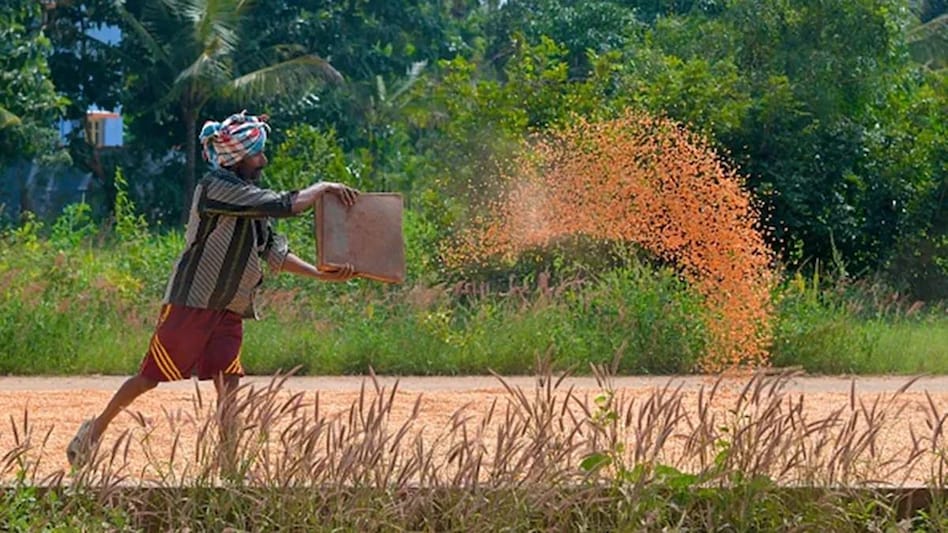The recent findings of the Intergovernmental Panel on Climate Change (IPCC) are a clarion call for the entire humankind.
The sober assessment of our planet’s future compelled UN secretary-general, António Guterres, to describe the IPCC report as a “code red for humanity”, which means we are reaching a point of no return; it’s a do or die situation for us.
The impact of climate change is evident on the Indian monsoon, which has become more erratic and violent over the last few years. The increasing variability in precipitation has resulted in prolonged dry spells followed by a heavy downpour.
A more chaotic monsoon will have a grave bearing on Indian agriculture and food production. The below-normal rainfall has sparked concerns over the output of summer-sown crops such as cotton, soybean, corn and rice.
Being the largest exporter of rice and the top importer of edible oils, a drop in production could only put pressure on the country’s burgeoning trade deficit.
The IPCC’s warning is consistent with the findings of a study conducted by a group of German researchers who compared the Indian monsoon with more than 30 state-of-the-art climate models from all around the world.
The report said, “For every degree Celsius of warming, monsoon rains will likely increase by about 5 per cent”.
There is no escaping this unless policymakers across the world make concerted efforts to reduce greenhouse emissions.
Cost of Inaction
Looking at the economic costs of the climate emergency, India was singled out in a 2020 report by Oxford Economics, a global forecasting firm, which predicted that the country’s GDP could fall 90% by the end of the century if it doesn’t improve on current policies.
Crop failures and increased infestation of pests and insects have become rampant. It will not be an exaggeration if we link these extreme climate events to farmers’ suicides.
The rising temperature, if left unchecked, would not only jeopardise food security but also make India dependent on food imports.
To understand the impact of climate change on Indian Agriculture and develop strategies for possible mitigation, the union agriculture ministry formed National Innovations on Climate Resilient Agriculture (NICRA) in 2011.
The study, conducted to analyse the impact of rising temperatures on crops, livestock and fisheries, identified 151 climatically vulnerable districts across India.
The findings suggested that rice and wheat in Indo-Gangetic plains, sorghum and potato in West Bengal and sorghum, potato and maise in the southern plateau could see reduced productivity.
Dynamics of Celsius
A 1-2 degrees Celsius rise could potentially decrease rice production by about 0.75 tonnes per hectare (t/ ha) in inland zones and 0.06 t/ha in coastal regions.
At the same time, a 0.5?C increase in winter temperatures is projected to reduce wheat yields by 0.45 t/ha. Similarly, research by National Dairy Research Institute, Karnal, also found that heat stress could adversely impact the fertility of cows and buffaloes.
Moreover, the whimsical climate pattern is reducing the number of fishing days as well as fishing stock. Ocean warming has wiped out much commonly eaten fish and forced several species to move poleward or towards deeper waters to stay at the ideal temperature.
Another concern is the decrease in the nutritional value of significant crops due to the rising CO2 levels. The lower concentrations of important dietary micronutrients like zinc and iron in major food crops could be attributed to a sharp increase in carbon emissions.
Rising CO2 could also reduce access to adequate levels of important vitamins in rice. The IPCC report also warned that the protein content of rice, wheat, barley and potatoes could fall by 6 to 14%, putting close to 15 crore more people at risk of protein deficiency.
With reduced yield, food prices could rise as much as a third by 2050, bringing an additional 18 crore people in low-income households.
Can’t hit snooze anymore
The writing is on the wall, and we are on the verge of facing the harshest consequences of a warming planet. And our only way out is to limit the impact of climate shock through evidence-based policy actions.
Aggressive adoption of sustainable farming solutions is vital to address the challenges of food security and ecological imbalance. The government has also launched several schemes to promote sustainable agriculture.
Several programmes focusing on agroforestry, rain-fed areas, water and soil health management, climate impacts, and adaptation have been initiated under the National Mission for Sustainable Agriculture. Initiatives like Integrated Watershed Management Programme promote rainwater harvesting while Krishi Sinchai Yojana lays impetus on adopting precision farming techniques such as micro-irrigation. Despite the government’s policy support, sustainable agriculture is yet to find a firm footing in India.
A study conducted by the Council on Energy, Environment and Water in April 2021 found that sustainable agriculture is far from mainstream in India.
After an in-depth review of 16 prevalent Sustainable Agriculture Practices(SAP), the research found that only five SAPs-crop rotation, agroforestry; rainwater harvesting; mulching and precision have scaled beyond five per cent of the country’s net sown area.
This could be attributed to lack of awareness, fragmented land holdings, weak infrastructure, and inadequate knowledge. A majority of the farmers couldn’t afford to try alternate farming methods due to low productivity and low capital investments.
The Ministry of Agriculture and Farmers Welfare (MoAFW) needs to significantly increase its budget allocation towards the National Mission for Sustainable Agriculture (which currently stands at 0.8%).
The government can also encourage SAP adoption by introducing resource conservation incentives and rewarding outcomes such as total farm productivity or enhanced ecosystem services.
Knowledge sharing and capacity building among farmers is key to the successful adoption of SAPs. Farmers should be trained on how a landscape works as an ecosystem. Combining farmers’ observations with scientific principles can help realise our vision for a resilient food and farm system.

















